This website is made possible by readers. I may earn a small commission when you buy through the links in this article at no extra cost to you. Learn more.
Details
- Price $79.99 on satechi.net
- Dimensions 3.75 x 2.5 x 1.25 inches
- Weight 11.2 oz (317g)
Overview
A few years after moving to Japan, I started reading digital nomad blogs, slowly getting enamored by the lifestyle. At that time, I aspired to one day live as freely as one. Fast forward to 2020, my wildest dream was realized when I finally became a fully-remote worker.
This new location-independent lifestyle has opened up my eyes to what I never thought was possible, a style of working I not only didn't dread, but I looked forward to. Even though my last workplace was within walking distance, this new working arrangement gave me true freedom unbounded by geography. Scampering to meeting rooms only to realize I needed my charger left on my desk, was a thing of the past.
Over the years, there were many impressive accessories that graced my digital nomad arsenal, such as the RAVPOWER 61W Charger and the NOMAD Kelvar USB-C Cable. But none of them with quite the same allure as Satechi's goods. Satechi's accessories have always been objects of my desire. There is something about their cool aluminum and minimalistic styling that draws me to them.
Satechi bursted into the scene as one of the first consumer electronic brands to carry USB-C products and have since led the pack.
The Satechi 100W USB-C PD Compact GaN Charger is the compact version of the Satechi 108W Pro USB-C PD Desktop Charger, and is the subject of my first Satechi product review.
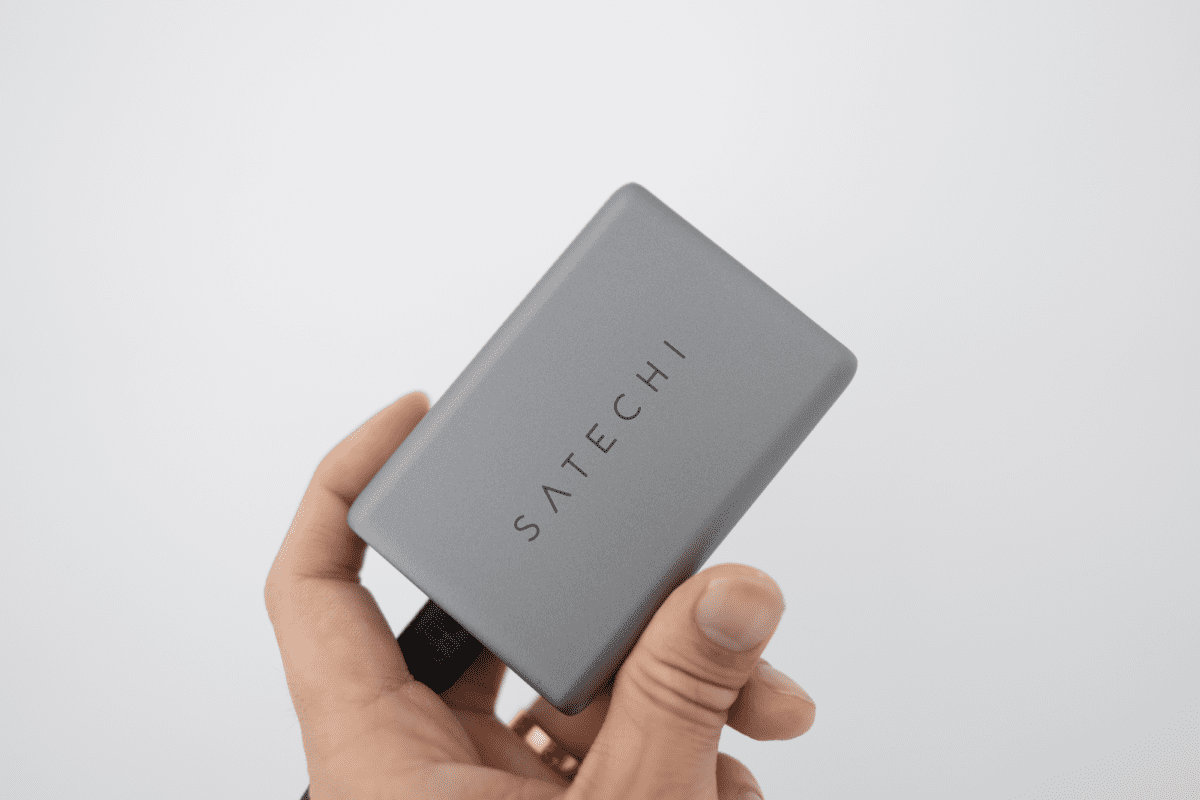
Style
If you've heard of Satechi, you probably noticed them because of how they look, or at least presented by their pristine product imagery.
Like many of Satechi's products, the charger is mostly aluminum. The face with the ports and power indicator is a matte black. Just like how black permeates every color in my life, the universal silver and black tone is consistent throughout Satechi's product lineup.
You can tell that their products are designed to look Instagram-worthy next to your overpriced Apple laptop. Even the color tone is calibrated to fall somewhere between the space grey and silver versions of Apple's laptop for maximum style compatibility.
The only hint of color is the blue tab inside the USB-A port. Nerd fact: The color in USB-A ports is actually used to indicate the specification, whit blue indicating a newer USB 3.0 SuperSpeed connector. For reference, USB 1.0 is white, 2.0 is black and 3.1 is teal in color.
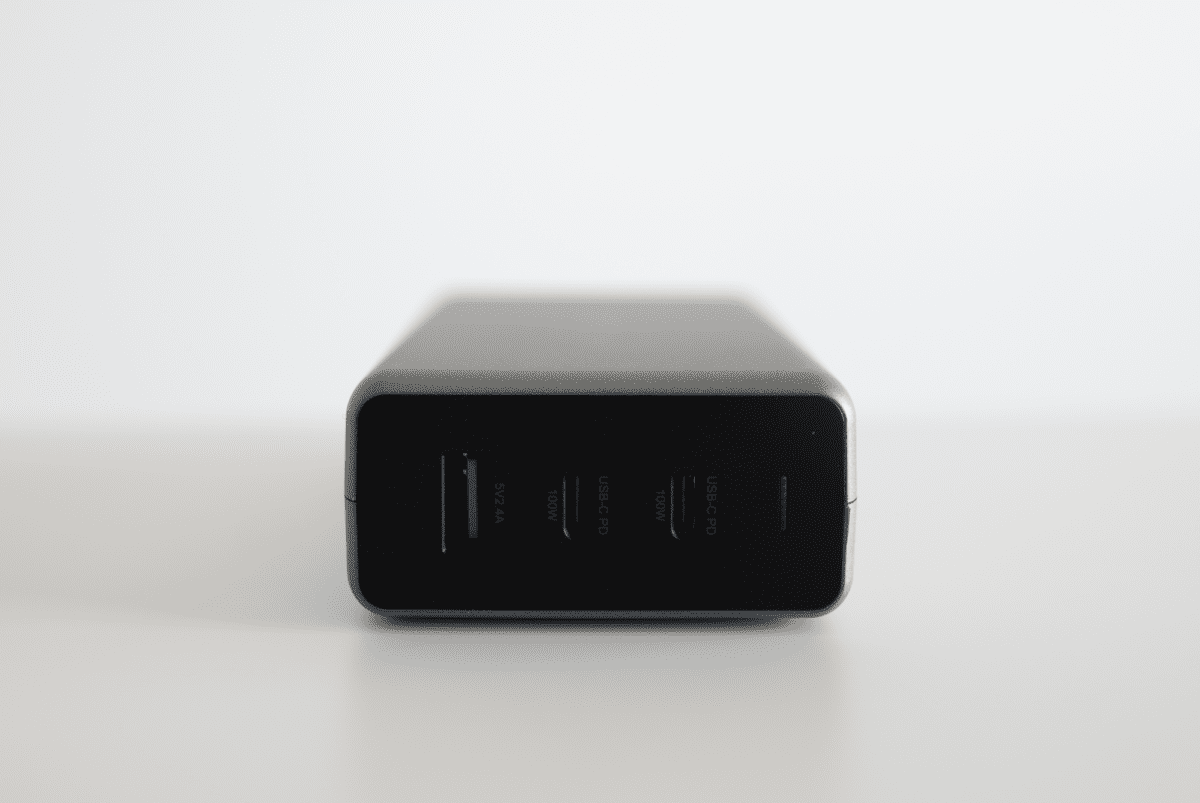
On one side of the charger is the Satechi logo, which is black and muted against the silver backdrop. The other side of the face is blank but has four small rubber feet at each corner.
This used to be an ad.
But no one likes ads, so I got rid of them. If my articles helped you, I ask for your support so I can continue to provide unbiased reviews and recommendations. Every cent donated through Patreon will go into improving the quality of this site.
There are safety marks on the side where the AC cable connects to. The opposite side with the ports has a blue indicator which lights up when the unit receives power.
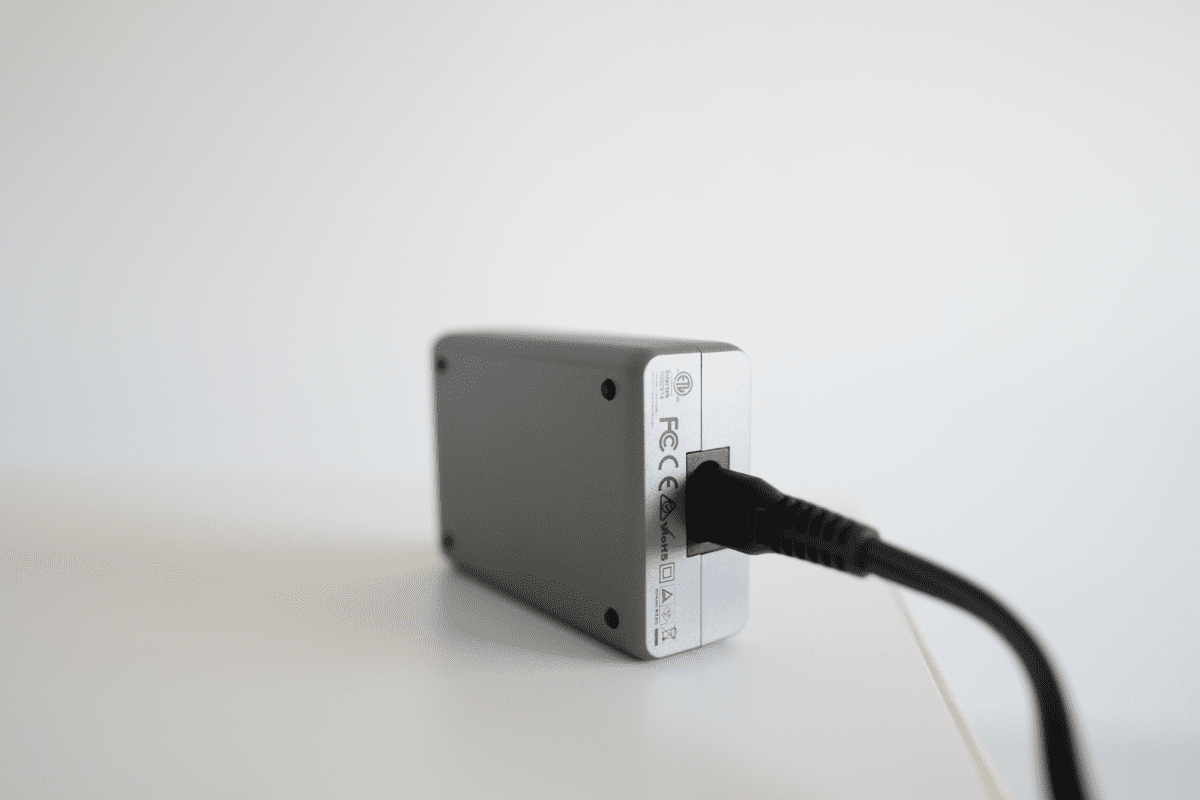
I just love how clean and sleek the charger is. With a smooth radius in the corner and clean seams where the connect at the top and bottom, everything about the appearance is befitting of a high quality product.
The only consideration is that if you are used to truly compact chargers like the RAVPOWER 61W Charger, this Satechi charger is bulky by comparison.
To Satechi's credit, this charger is not for minimalist travelers. This is for those who need to simultaneously charge via two USB-C and one USB-A ports at full power. Unless I am in super Saiyan working mode or recharging drained electronics through the night, I never find myself in a situation where I need to charge that many devices at a time.

While the main unit is beautiful, the AC cable it comes with is its Achilles heel. It's the stiff type that stays wiry after you unravel it. Especially when it sticks out of your desk off the side, it can look pretty disorganized.
Material and Technology
When it comes to evaluating chargers, there are a few key features that are important. The very first one you have to look at is wattage.
100W
What does the 100W mean? Simply put, wattage is the unit for electrical power. The higher the number, the more power it can give out. This matters because if the wattage is too low, it will not charge devices that require more power.
How much power your device needs depends largely on how you use it. Even though a MacBook Pro can technically be charged with a 27W adapter, the 2020 16-inch MacBook Pro comes with a 96W power adapter.
I designed a thing.

I found a 100 year old company that would create these heirloom quality canisters for me. They are handmade and will keep your tea leaves, coffee beans or anything that you need dry for years to come.
or read review
The reason for this is that depending on the applications you use, your laptop might take up more or less power. Tasks such as video rendering requires intensive GPU usage and will take up a lot of power than task like surfing the net or watching Netflix. In such cases, a 27W power adapter is insufficient to charge the battery during the operation.
Additionally, you need to account for each external device you power via the ports. Since I don't usually use any external hardware with my laptop when traveling, I've found that 45-60W is sufficient for most cases.
The 100W that this Satechi charger offers will be more than enough to feed the most power-intensive laptop and any other extra devices you would want to charge simultaneously with the other two ports.
The biggest tradeoff here really comes down to size and weight. The more power a charger can afford, the bigger and heavier it will usually end up being. While you won't have to worry about 100W being insufficient, you should consider if you really need 100W or prefer weight and size savings.
Another thing to note is that the 100W is shared among all three ports. The power distribution between the ports are as follows:
- 1 x USB-C PD connected – up to 100W
- 2 x USB-C PD connected – up to 60W/30W
- 1 x USB-C PD + 1 x USB-A connected – up to 100W/12W
- 2 x USB-C PD + 1 x USB-A connected – up to 60W/30W/12W
So to put it simply, you can only get the full 100W if you are charging one device in the USB-C port and it gets less as you plug in more. But, even at 60W when all three ports are in use, it's more than enough to charge your laptop in most use cases.
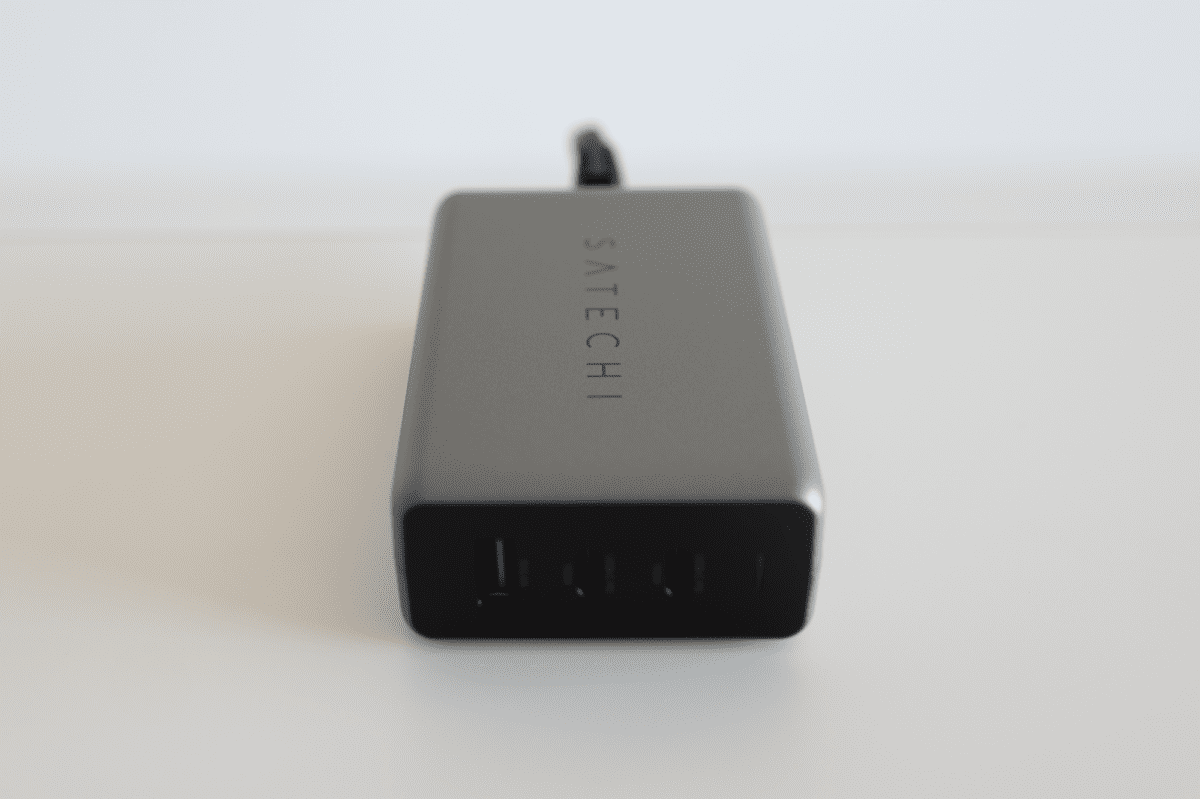
PD (Power Delivery)
PD or Power Delivery is another important feature. For anyone looking for a new charger, PD support is definitely a feature you should look out for.
Power Delivery, with the most recent iteration being 3.0, is a USB specification that allows a charger to be compatible to a wide range of devices. What happens when you connect a device to a PD charger is that a kind of negotiation will be made between the two devices to agree on the most appropriate amount of power to give and receive.
Devices that need less power will get less power and power-hungry devices will get more. This prevents over or under charging. Most importantly, it allows your Satechi charger to be compatible with the widest range of devices.
GaN
GaN or Gallium Nitride is all the rage among secret underground cult of charger nerds right now. Along with PD, it's one of the key features to look out for when comparing chargers.
Older chargers use silicon instead of Gallium Nitride. The main benefit of GaN over silicon is reduced weight, size, costs and increased energy efficiency.
It's enough for most to know using GaN is currently the best way in which chargers are manufactured and there is no reason to accept anything less. If you really want to learn about the nitty gritty of gallium nitrate, you can read this article by Gan Systems, a manufacturer that specializes in GaN products.
Usage
This is arguably the most important section for those trying to decide. I can name all the amazing-sounding features but it really comes down to the experience of actual use.
First of all, while this is my first Satechi product review, this is not the first Satechi 100W charger I received. I've had the unfortunate experience to have received two faulty units before getting one that could work. The first one couldn't turn on, with the blue light indicator not lighting up. The second one worked for about twenty minutes before resigning into eternal slumber.
I was prepared to give up but the third one finally worked with no issues. While, if this happens to you, Satechi will definitely send a replacement, it was a little concerning. One charger is usually all you've got during travel so failure is not an option. The third one has been working fine so far for a few weeks now, but I will update this section should there be any updates.
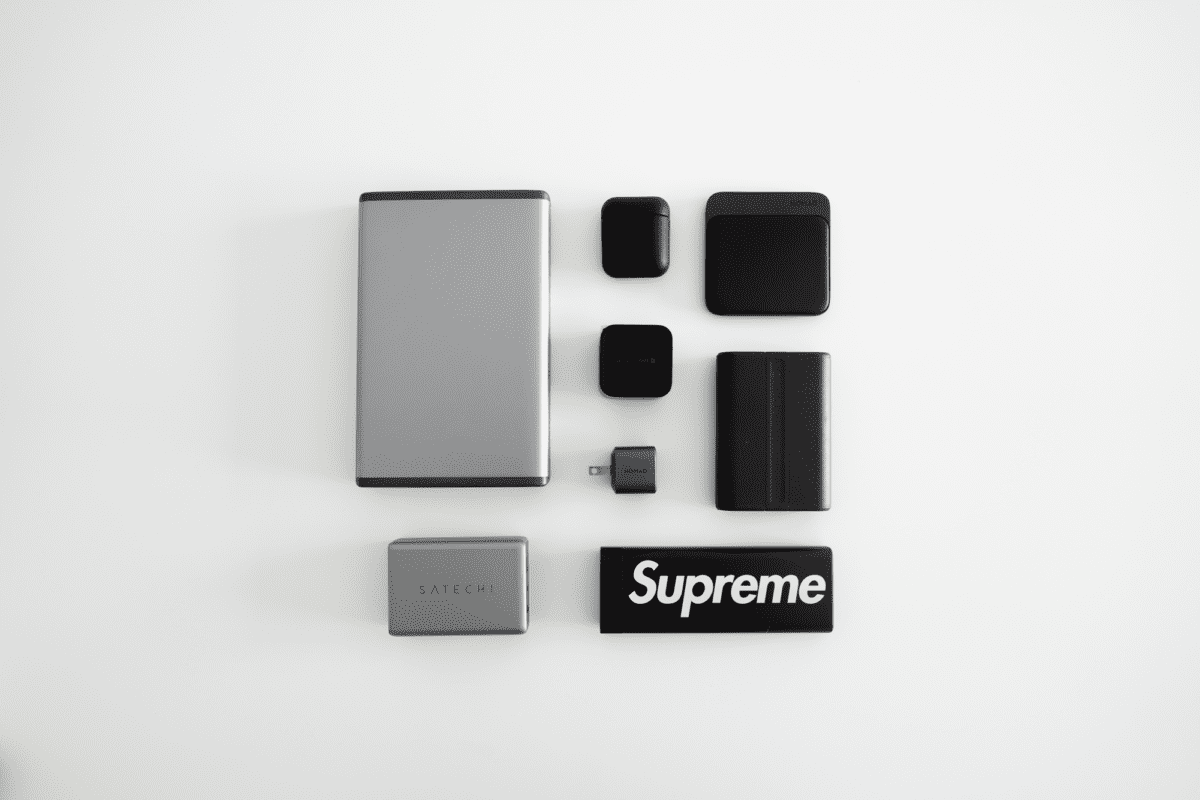
So far, no matter what I plug into it, the Satechi 100W Charger had no problem charging. This is GaN and PD technology at work.
As mentioned, the high power charging capability is only made possible by the size and weight. While the size of the main unit is acceptable for me, what I needed getting used to was the extra cable to connect the charger to the power socket.
I am used to something like the RAVPOWER 61W Charger which lets me stick it directly into the wall socket, but the Satechi 100W Charger is designed to be placed next to your devices so that you can also use one of Satechi's shorter cables to charge your devices.
Some cafe tables have pretty limited space and you'll come across situations where there just isn't enough space on the table for it. The cable that comes with the charger is a stiff AC-type cable, which actually has enough tension to drag your charger off the table if you pull on it too much while trying to plug in.
There are actually little feet at each corner of one side of the unit. Despite being really small, they provide sufficient traction to prevent the unit from being dragged off the table under the weight of the AC cable.
Another thing that keeps me up at night, literally, is the blue power indicator. While it's nice to know that the unit is receiving power, the blue indicator in a dark hostel room is annoying, to say the least.
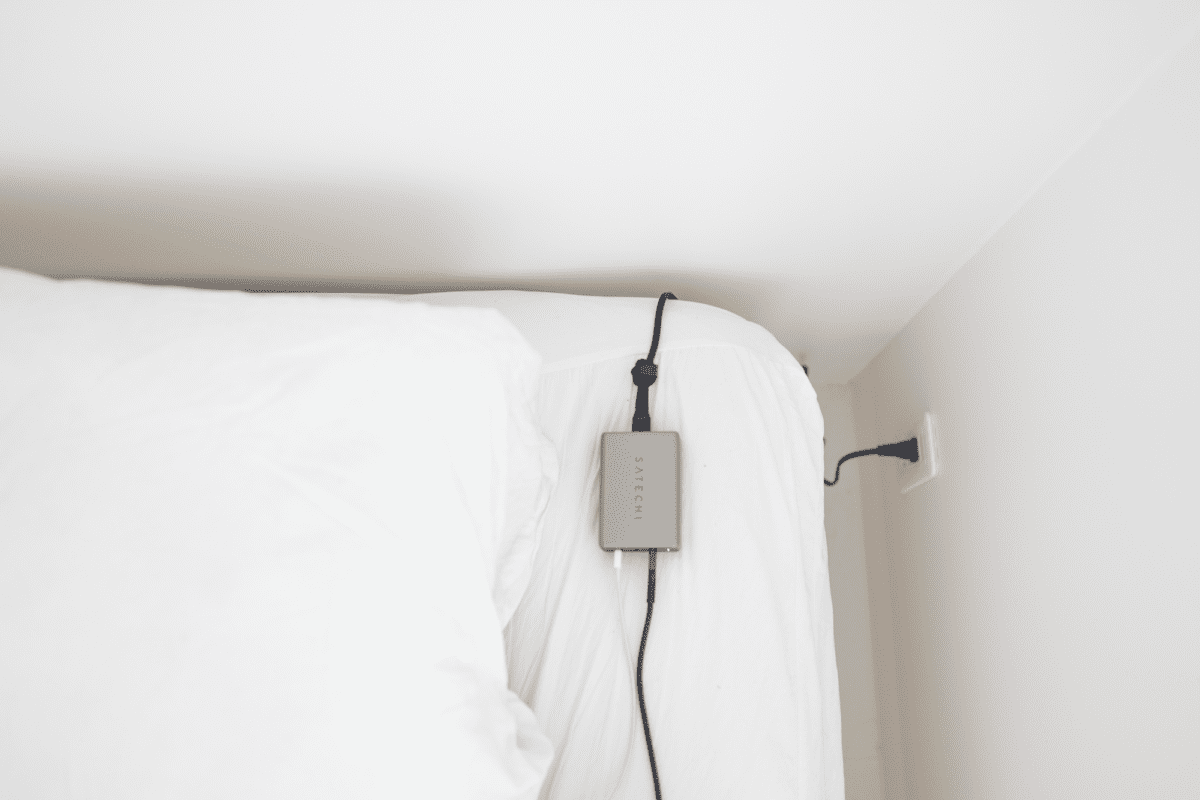
While the power indicator helped me confirmed that the first two units were faulty, they aren't really necessary since it's easy to confirm power output.
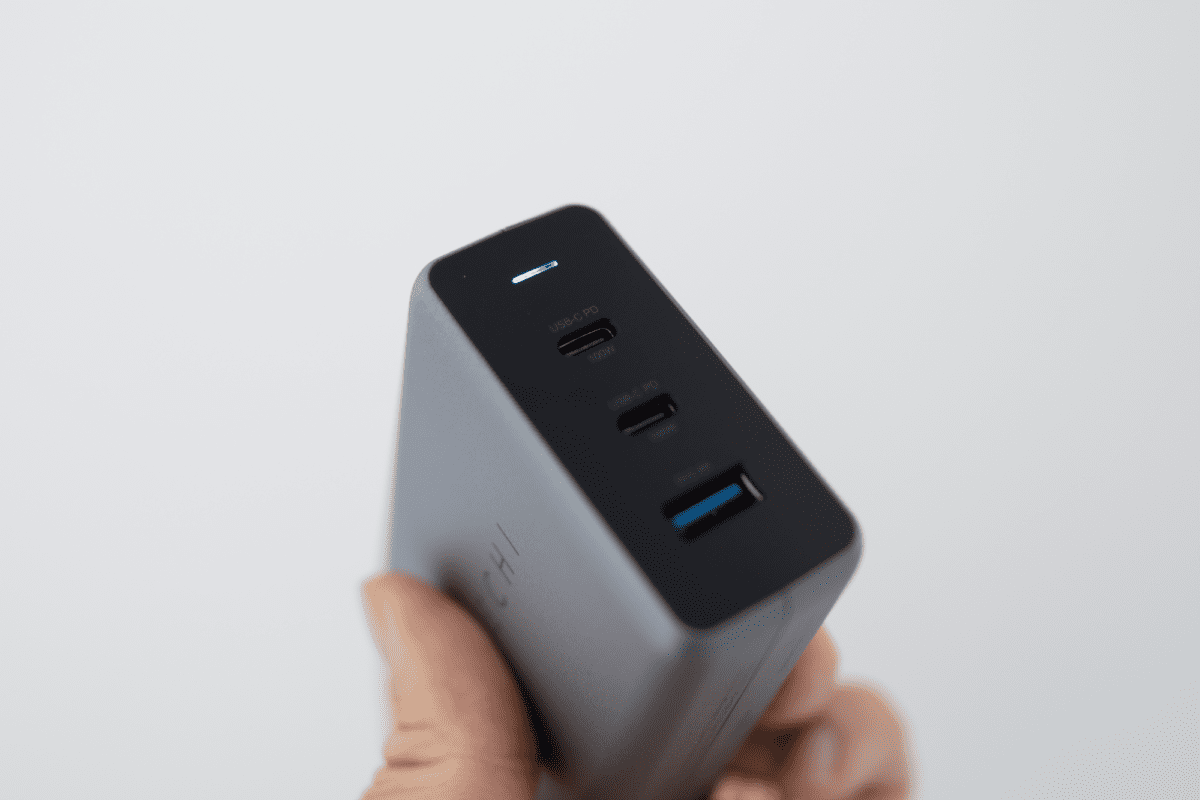
Satechi 100W USB-C PD Compact GaN Charger vs Satechi 108W Pro USB-C PD Desktop Charger
As mentioned, the 100W is a compact version its predecessor, the 108W Desktop Charger. Apart from the slightly lower power output, there are some key differences that will help decide between the two.
Satechi 100W Compact Charger is Lighter and Smaller
As a charger designed to be compact, it's no surprise that it's smaller and lighter than the 108W Desktop Charger.
The compact version is 11.2 oz while the desktop version is 14.7 oz, giving it a difference of 3.5 oz or 99.2 g. On its own, the weight difference might seem negligible. But, if you are a long-term traveler carrying it for long periods at a time, little weight differences add up.
Satechi 100W Compact Charger has One Less USB-A Port
This difference here will likely be the crux of your decision. With both devices more same than not, even costing the same price, the main difference is that you are sacrificing a USB-A port for smaller size and lesser weight.
Satechi 100W Compact Charger uses GaN Technology
GaN technology is also the reason why they can achieve the smaller size and lighter weight with minimal loss of power output.
Satechi 108W Desktop Charger has Fixed Power Output per Port
Unlike the compact charger which can output more power per port depending on if the other ports are using power, the desktop charger produces a fixed rate of power.
As an example, the desktop charger can only output a max of 90W of power through its USB-C port even with the other ports unused, since the remaining output has been assigned to the other ports.
The compact charger, however, can use the full 100W worth of power as long as the other ports aren't in use.
Conclusion
The Satechi 100W Charger is a great addition to any digital nomad setup with the caveat that it's not the best choice for those who prefer a minimalist setup. You need to consider how many ports and power you really need, and how much size and weight savings you are giving up for it.
If size and weight are of no concern to you, then this charger is an easy buy. It is one of the best looking chargers out there, especially suitable for those going for a clean Mac setup.
Like this review? See all of my in-depth reviews.
Also, consider supporting me by being a Patreon. Every cent given will go back into improving the content of this website.